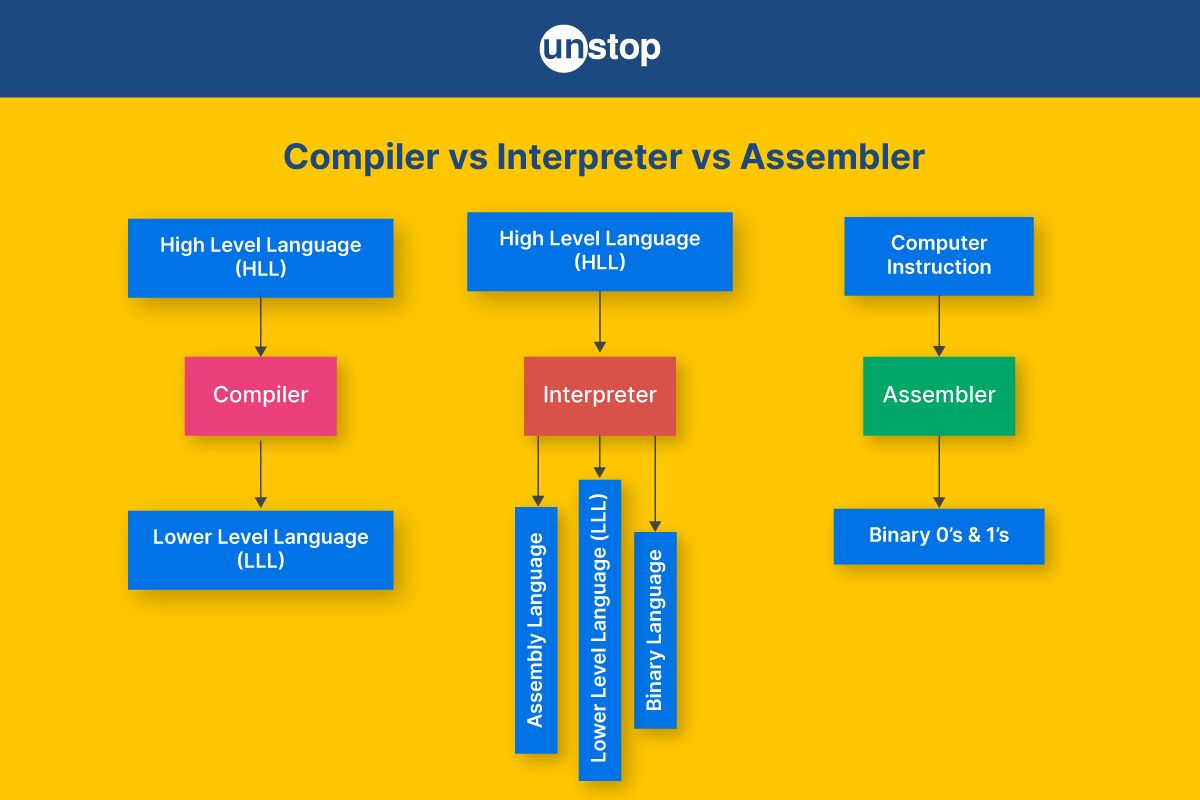Login to continue reading
And access exclusive content, personalized recommendations, and career-boosting opportunities.
Don't have an account? Sign up
Blogs you need to hog!

This Is My First Hackathon, How Should I Prepare? (Tips & Hackathon Questions Inside)
D2C Admin


10 Best C++ IDEs That Developers Mention The Most!
D2C Admin


Advantages and Disadvantages of Cloud Computing That You Should Know!
D2C Admin


Is IoT Valuable? Advantages And Disadvantages Of IoT Explained
Shivangi Vatsal


 A compiler is a translator program that converts source code written in a high-level language like Java, C++, etc. to equivalent machine language in one go.
A compiler is a translator program that converts source code written in a high-level language like Java, C++, etc. to equivalent machine language in one go.  It is a translator program that converts assembly language or low-level programming language to machine code.
It is a translator program that converts assembly language or low-level programming language to machine code. It converts source programs written in High-Level Programming language into machine code line by line, which means it executes one single line at a time into machine language.
It converts source programs written in High-Level Programming language into machine code line by line, which means it executes one single line at a time into machine language.











Comments
Add comment